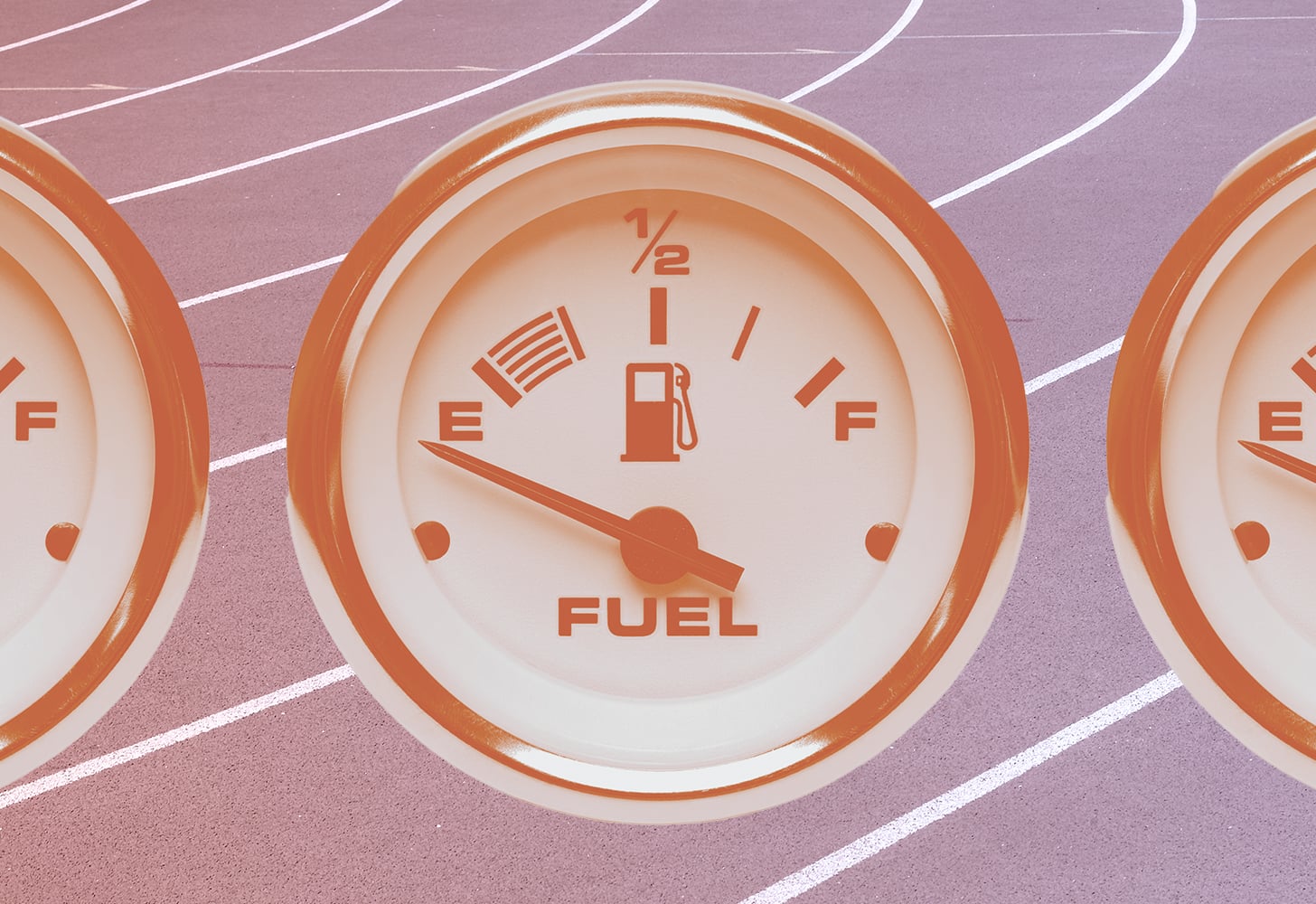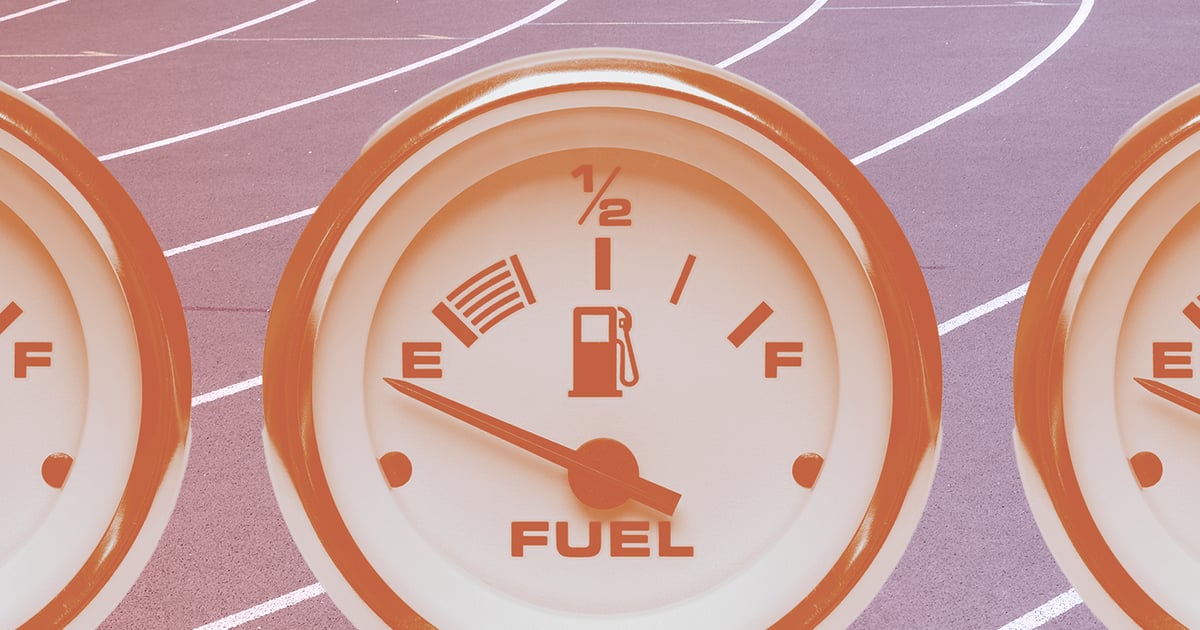
Eating disorders have a long-held grip on sport. While athletes of all genders grapple with disordered eating behaviors, women have been hit the hardest. Research has found that disordered eating is almost twice as prevalent in female athletes compared to male athletes (62 percent and 32 percent, respectively). And a new report from the International Olympic Committee (IOC) suggests that a significant population of athletes have previously been excluded from discussion and research of EDs in professional and recreational sport.
In September, the British Journal of Sports Medicine published a study finding that Paralympians may be fighting a silent battle against disordered eating. It looked specifically at RED-S — which stands for relative energy deficiency in sport and was previously identified as the “female athlete triad.” RED-S refers to poor athletic performance and declining health due to inadequate caloric intake and/or burning too many calories.
“When you boil it down, RED-S is not having a sufficient amount of fuel to provide energy for exercising and the body’s essential functions,” says Susannah Scaroni, MS, RD, a three-time Paralympics gold medalist. If left untreated, RED-S can lead to poor immunity, interrupted menstrual cycles, weakened bones, depression and anxiety, and even severe cardiovascular issues.
The research raised concerns that RED-S may be even more prevalent in para athletes than in non-disabled athletes. Of the US para athletes surveyed in the study, 62 percent attempted to alter their weight to increase performance, 44 percent said they’d experienced menstrual dysfunctions, and 32 percent received elevated scores on the Eating Disorder Examination Questionnaire (a 28-item self-report designed to evaluate the severity of eating disorder diagnoses). Together, all these factors pave the road to RED-S.
Given these frightening statistics, we spoke to two Paralympic athletes about what may be contributing to them — and what more needs to be done to center para athletes in the conversation around nutrition and body image in sport.
Nutrition’s Central Role in RED-S
At its core, RED-S is caused by an imbalance of energy in and energy out. In non-disabled athletes, eating disorders are often sparked by pressure to lose weight by training constantly and eating a “lean” (read: insufficient) diet. As American long-distance runner Kara Goucher told The New York Times in a 2019 op-ed, “When someone proposes something you don’t want to do, whether it’s weight loss or drugs, you wonder, ‘Is this what it takes? Maybe it is, and I don’t want to have regrets.’ Your careers are so short. You are desperate. You want to capitalize on your career, but you’re not sure at what cost.”
Capitalizing on a career opportunity by shrinking your body often comes at a great cost. (Remember, everything from increased stress fractures to depression has been tied to RED-S.)
Para athletes face their own, seldom discussed, array of pressures when it comes to nutrition and body image — first and foremost because there is little research on how much food they need to perform at a competitive level.
“There are many limitations when using a single equation to calculate [energy requirements] for able-bodied athletes,” Scaroni explains. “In para athletes, different amounts of muscle mass are being used, and muscle groups are performing in ways that [able-bodied] athletes may not use them.” For instance, she says, someone who races marathons in a wheelchair relies on their arms to cross the finish line much more than a non-disabled athlete. Thus, they may require distinct quantities of energy to achieve their best performance.
“Society doesn’t like to see disabled individuals as complex people.”
“Para athletes may even have different gastric motility rates, which refers to how efficiently someone’s body can use the food they eat,” Scaroni says. “Someone’s body may use the food that they eat differently because of a spinal cord injury, for example. Or, people with cerebral palsy or those with amputations may have a different type of gait when they’re ambulating in their competitions that may be less efficient than someone who is able-bodied.”
These factors and many more present a challenge for para athletes deciding what to put on their plates. And it doesn’t help that research on energy requirements for people with disabilities is nascent to nonexistent, making trial and error (and sometimes, nutritional deficiencies) a necessary step in discovering exactly what fuel is necessary for health and performance.
“The whole support system around an athlete — from parents to coaches to physical therapists to doctors — really needs to take an individualized approach to questioning an athlete about how they’re consuming and what they’re experiencing,” Scaroni says.
Body Image and the Pressure to Perform
Research has indicated that lean body mass is an asset in many sports. But despite the fact that the vast majority of studies on this topic have excluded disabled athletes, many para athletes still incorporate these findings into their own body image and athletic standards. Pursuing this aesthetic may prompt folks to tack on extra miles or increase other forms of fitness, according to Lacey Henderson, CMPC, a Paralympian and certified mental performance consultant. Over time, this overtraining can contribute to developing RED-S.
“There are so many old thought processes about what an athlete needs to look like in order to perform in para sports,” she says.
Many para athletes Henderson has spoken with feel that they must maintain a certain body size for functional purposes. As she explains, “What I’ve seen with disordered eating and disordered eating behaviors is that [the size of a para athlete’s body] is something that they feel like they might have some semblance of control over.”
Henderson also says there’s a homogenous idea of how “inspirational” para athletes should look and behave — despite the fact that disabilities encompass hundreds of thousands of different experiences. “We talk about ‘inspiration porn’ a lot in Paralympics, seeing this disabled person who overcame all these obstacles and then won a gold medal,” she says. “Society doesn’t like to see disabled individuals as complex people.”
The desire to fit into prosthetics can also “become a huge trigger for RED-S,” Scaroni adds. “You’re afraid your body will change because that’s another $10,000, or more, expense if you have to buy a new customized piece of equipment,” she explains. “I’ve seen this issue for younger athletes. After adolescence, their bodies start growing, and they don’t fit into their racing chair or their basketball chair anymore.”
As Scaroni begins to take on the dual role of Paralympian and dietitian, she hopes to contribute to research that centers many types of bodies and experiences. And, of course, it’s crucial to spotlight the lived experiences of para athletes and the challenges they face.
“We’re seeing non-disabled athletes coming forward and talking about RED-S, but it’s something that we also need to be included in, too,” Henderson says. “Because society paints a picture of disabled people as an ‘inspiration,’ it almost feels like you’re letting people down if you show weakness.”
Henderson hopes that someday soon, the sports community will stop holding para athletes to standards that force them to wear a veneer of perfection. What lies beyond the pearly perception of parathletic resilience is a much more complex and human experience — one that deserves just as much discussion, research, and media attention.
Image Source: Getty / WIN-Initiative / Neleman Michael Burrell
